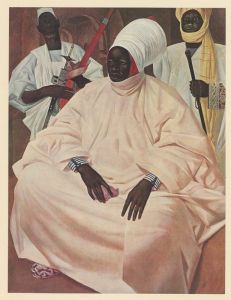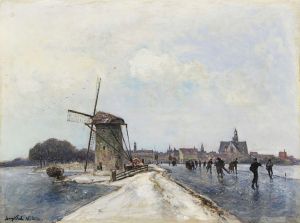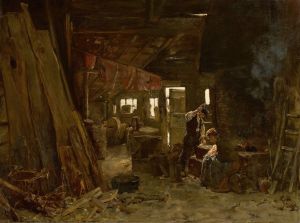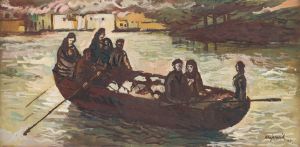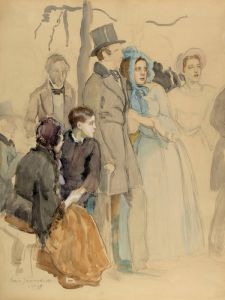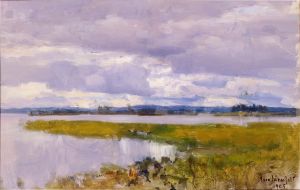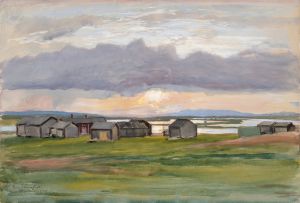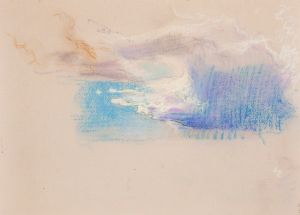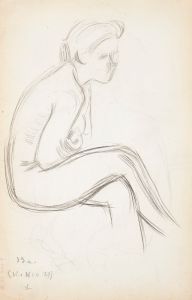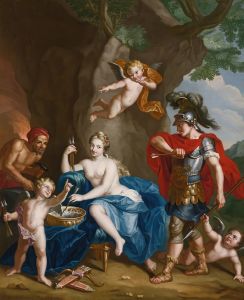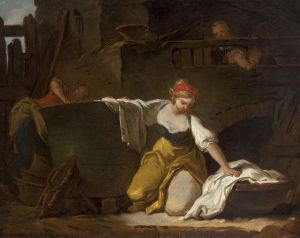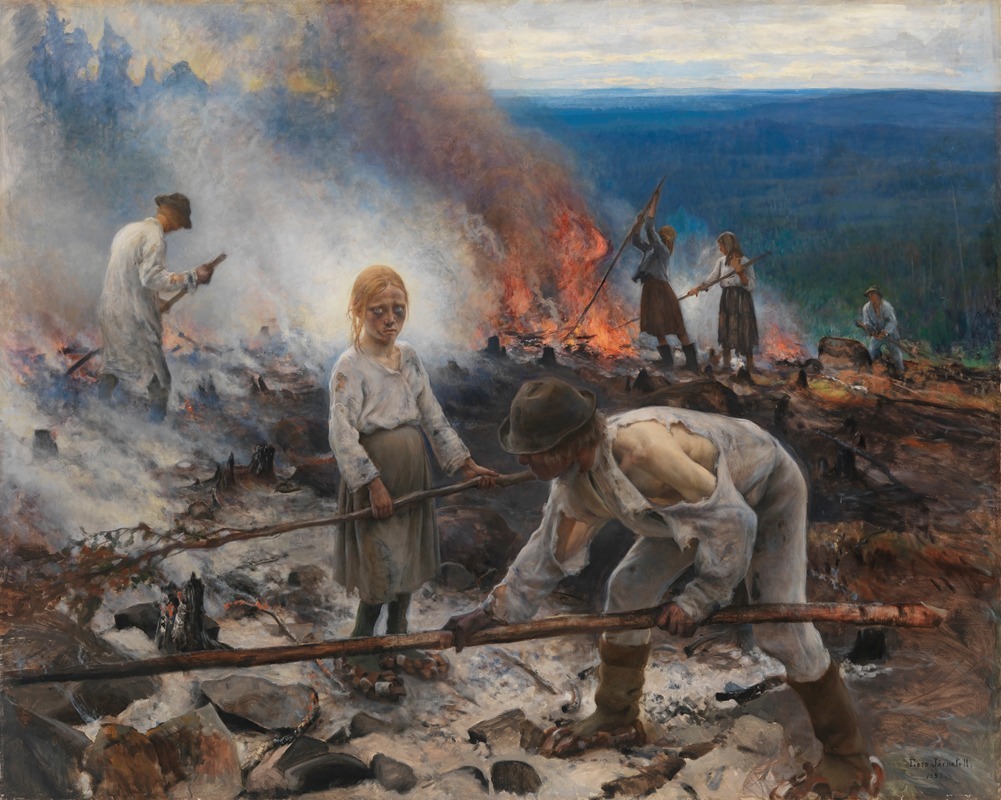
Under the Yoke
A hand-painted replica of Eero Järnefelt’s masterpiece Under the Yoke, meticulously crafted by professional artists to capture the true essence of the original. Each piece is created with museum-quality canvas and rare mineral pigments, carefully painted by experienced artists with delicate brushstrokes and rich, layered colors to perfectly recreate the texture of the original artwork. Unlike machine-printed reproductions, this hand-painted version brings the painting to life, infused with the artist’s emotions and skill in every stroke. Whether for personal collection or home decoration, it instantly elevates the artistic atmosphere of any space.
"Under the Yoke" (Finnish: "Raatajat rahanalaiset") is a significant painting by Finnish artist Eero Järnefelt, completed in 1893. The artwork is considered one of the most iconic depictions of rural life in Finland during the late 19th century and is a prime example of realism in Finnish art.
The painting portrays a group of Finnish peasants engaged in the labor-intensive process of slash-and-burn agriculture, a traditional farming method that was widely practiced in Finland at the time. The scene is set in a forest clearing, where men, women, and children are shown working together to burn and clear the land for cultivation. The figures are depicted with a sense of dignity and resilience, despite the arduous nature of their work. The title "Under the Yoke" reflects the physical and social burdens faced by the rural population, emphasizing the hardships of agricultural labor.
Eero Järnefelt (1863–1937) was a prominent Finnish painter associated with the Golden Age of Finnish Art. He was influenced by the realist movement and sought to depict the everyday lives of ordinary people with honesty and empathy. Järnefelt was also connected to the Finnish nationalist movement, which sought to promote Finnish culture and identity during a period when Finland was an autonomous Grand Duchy under Russian rule. His works often reflect a deep connection to Finnish landscapes and rural traditions.
"Under the Yoke" is notable for its meticulous attention to detail and its use of naturalistic colors, which capture the textures of the forest, the smoke rising from the burning wood, and the expressions of the workers. The painting is often interpreted as a tribute to the perseverance and strength of the Finnish people, as well as a commentary on the social and economic conditions of the time.
The painting is housed in the Ateneum Art Museum in Helsinki, Finland, which is part of the Finnish National Gallery. It remains one of Järnefelt's most celebrated works and continues to be a powerful symbol of Finnish cultural heritage.





